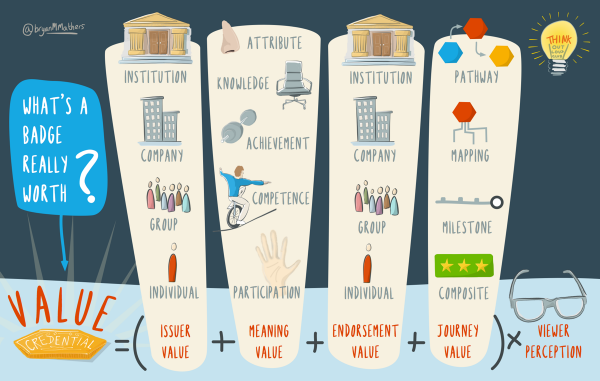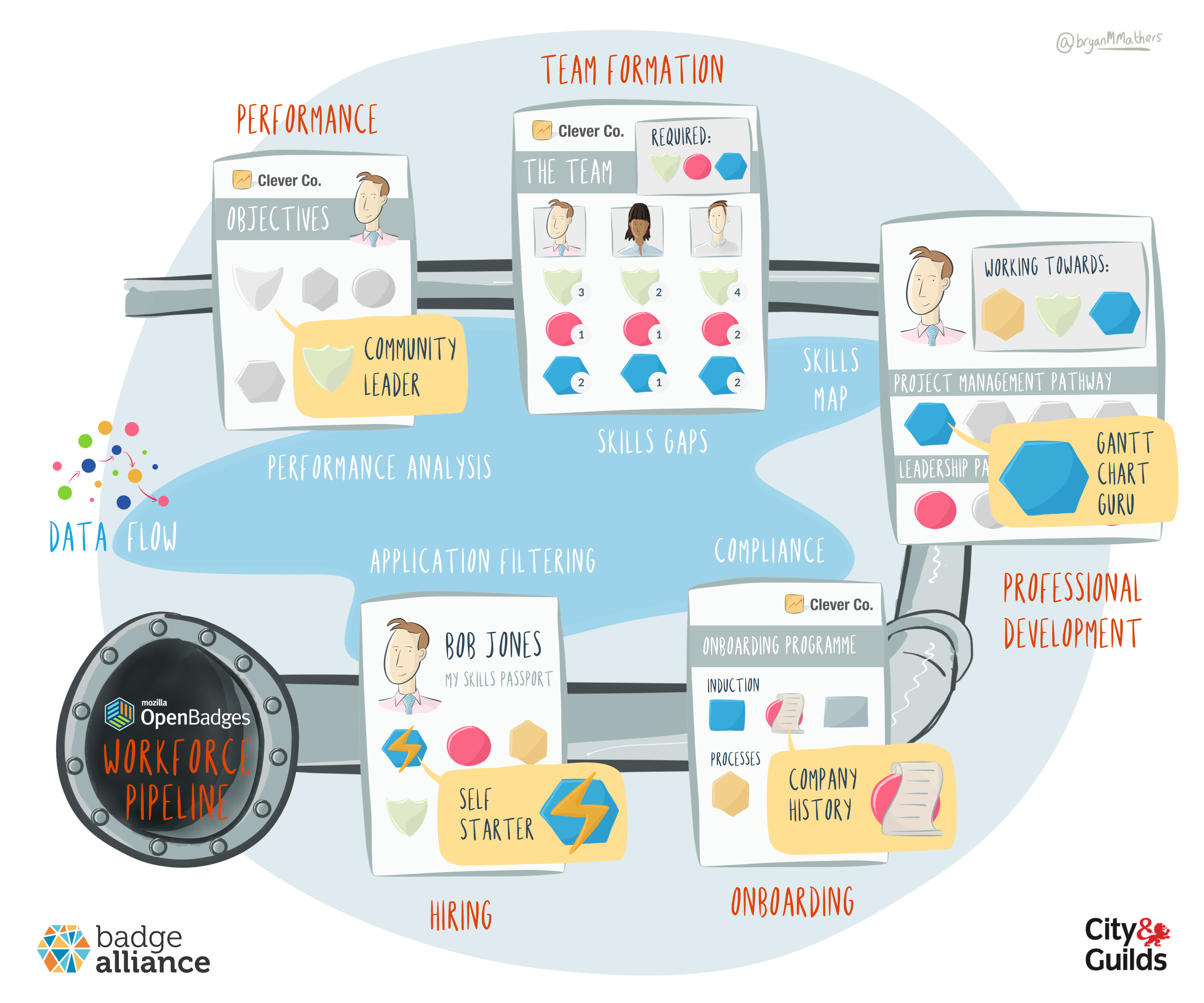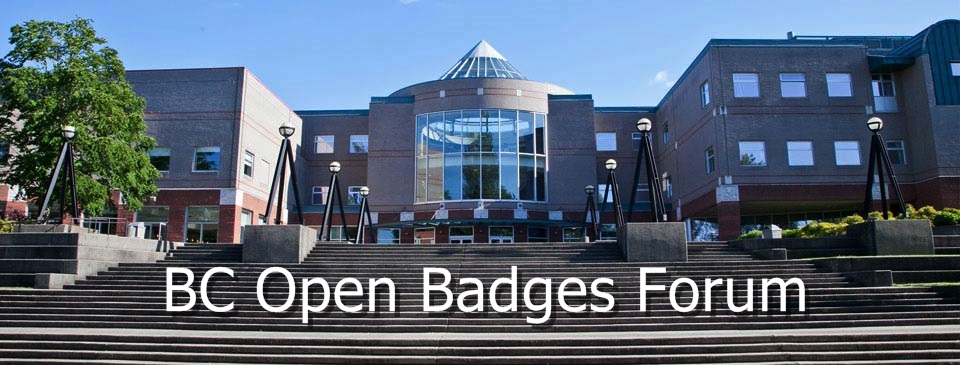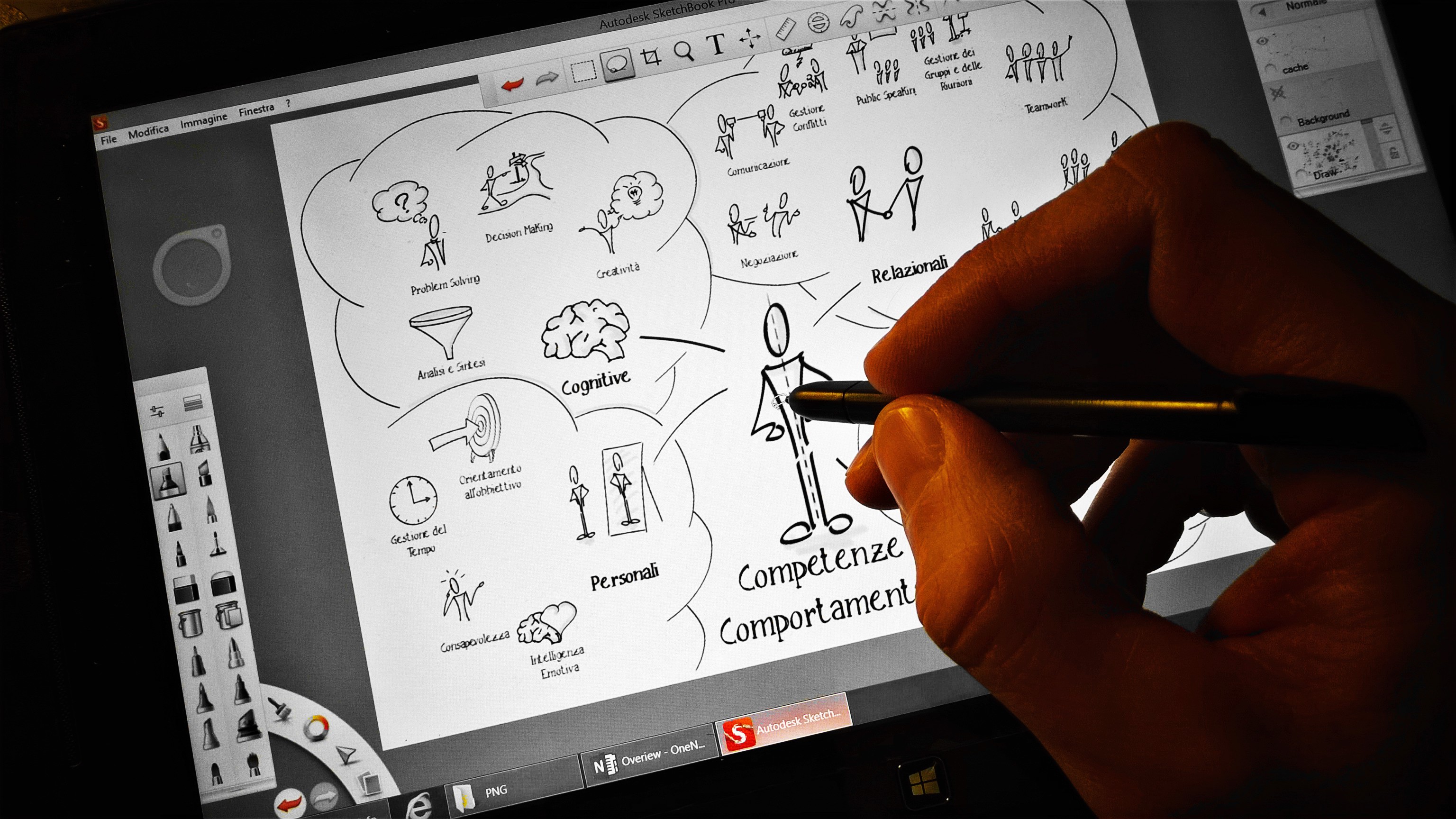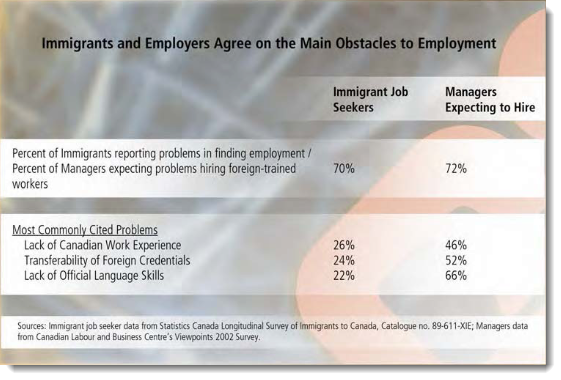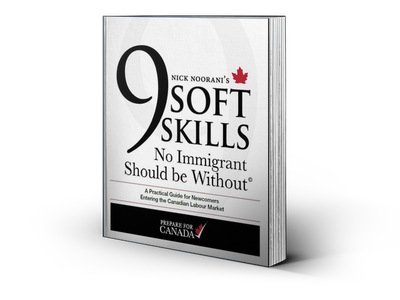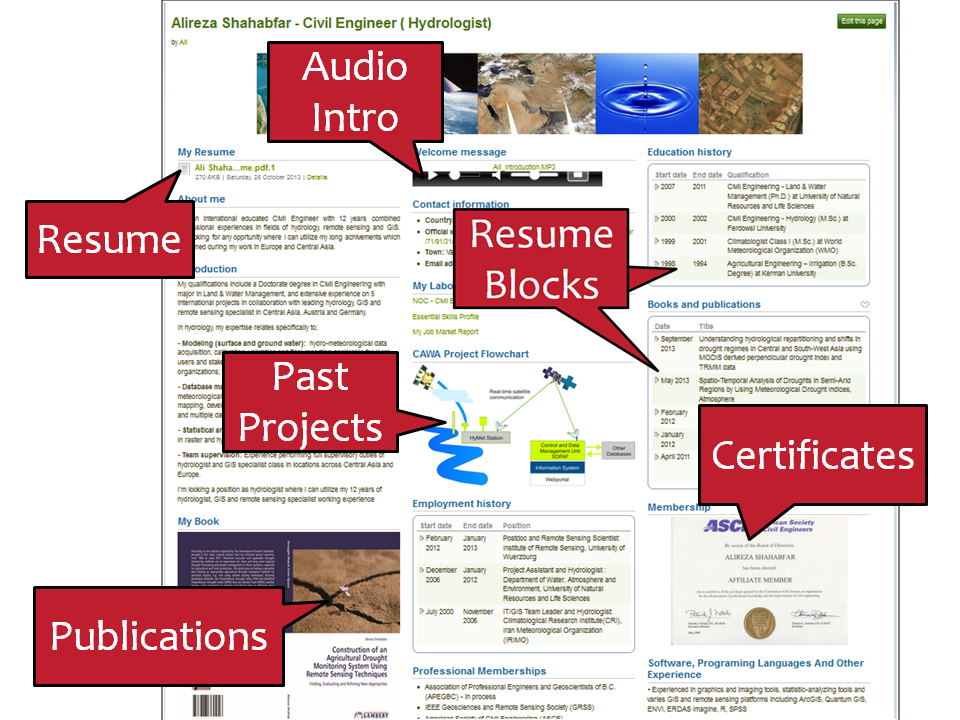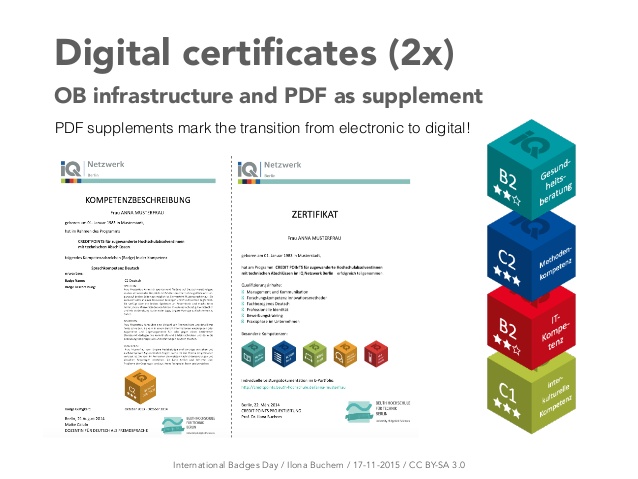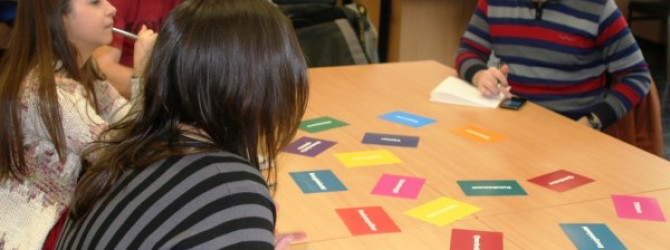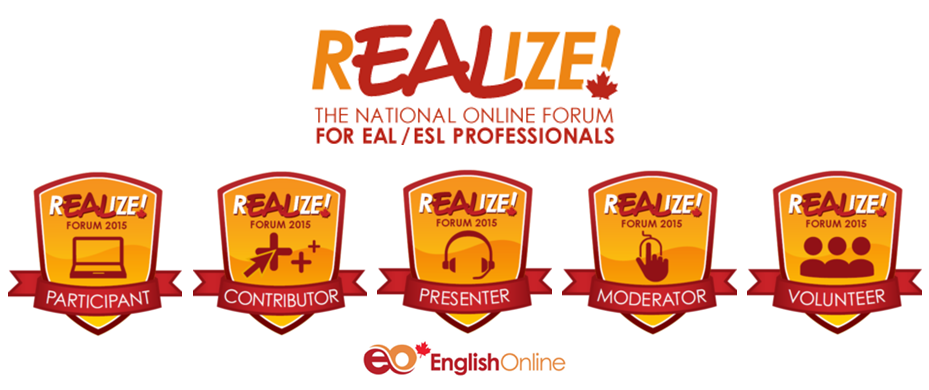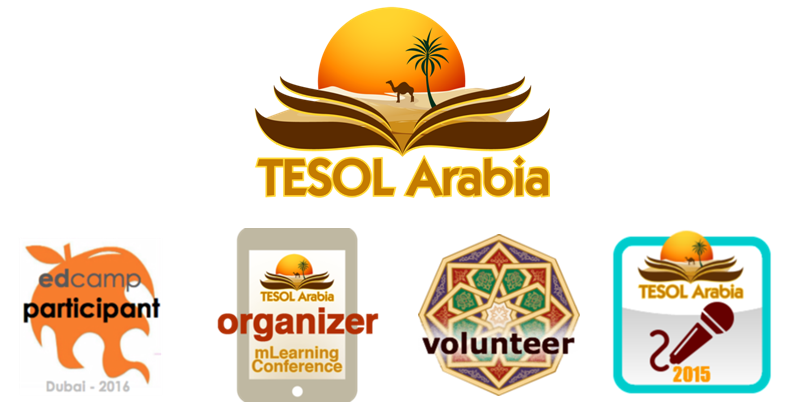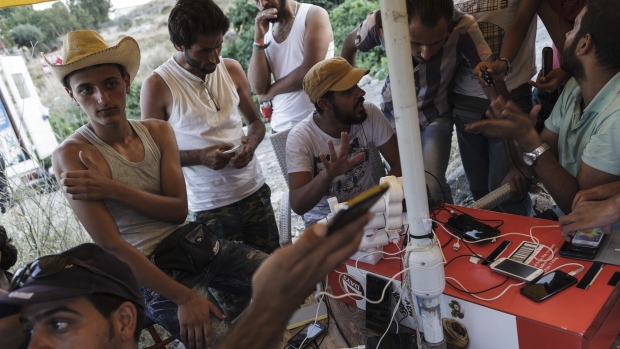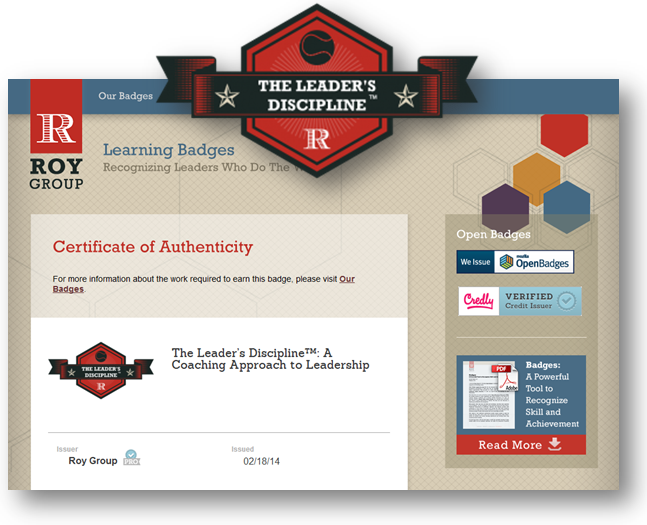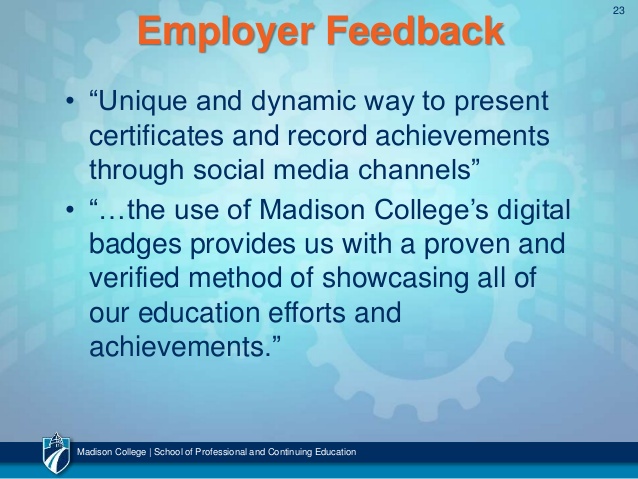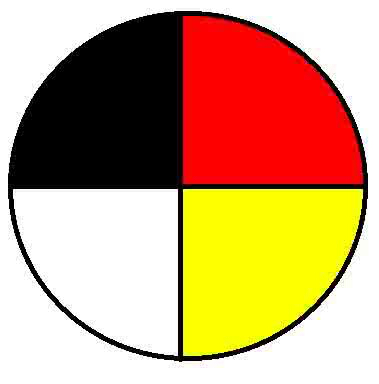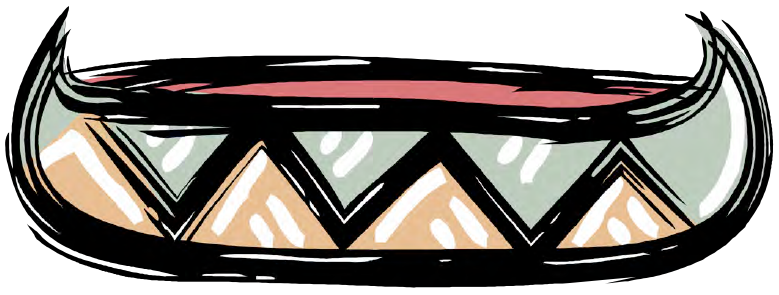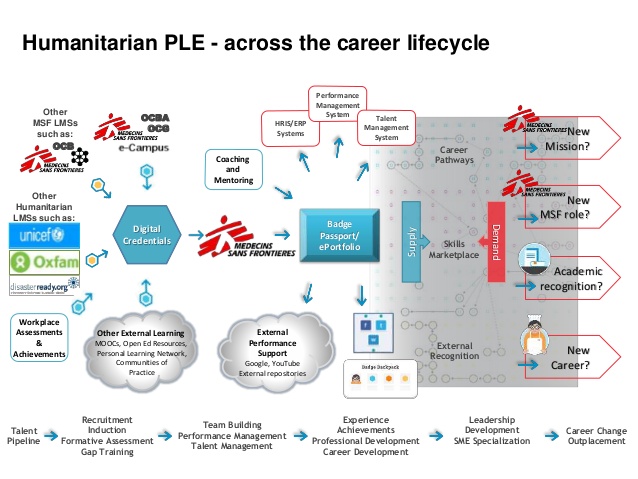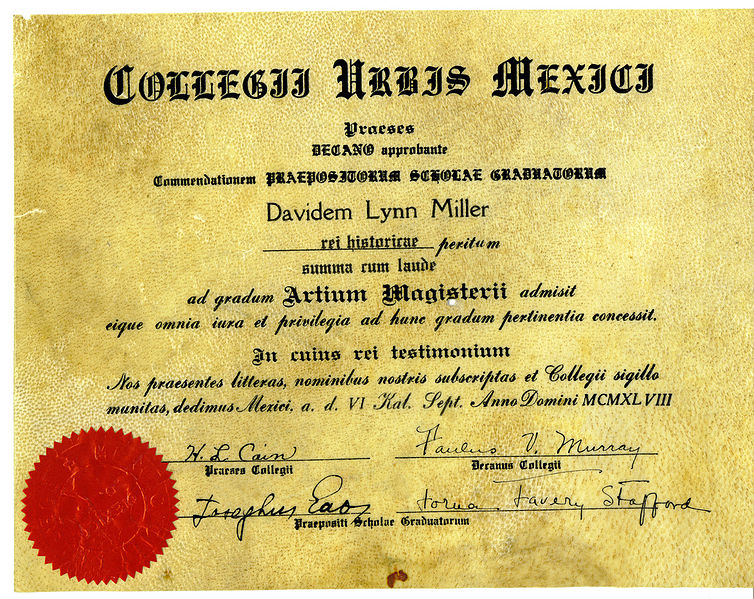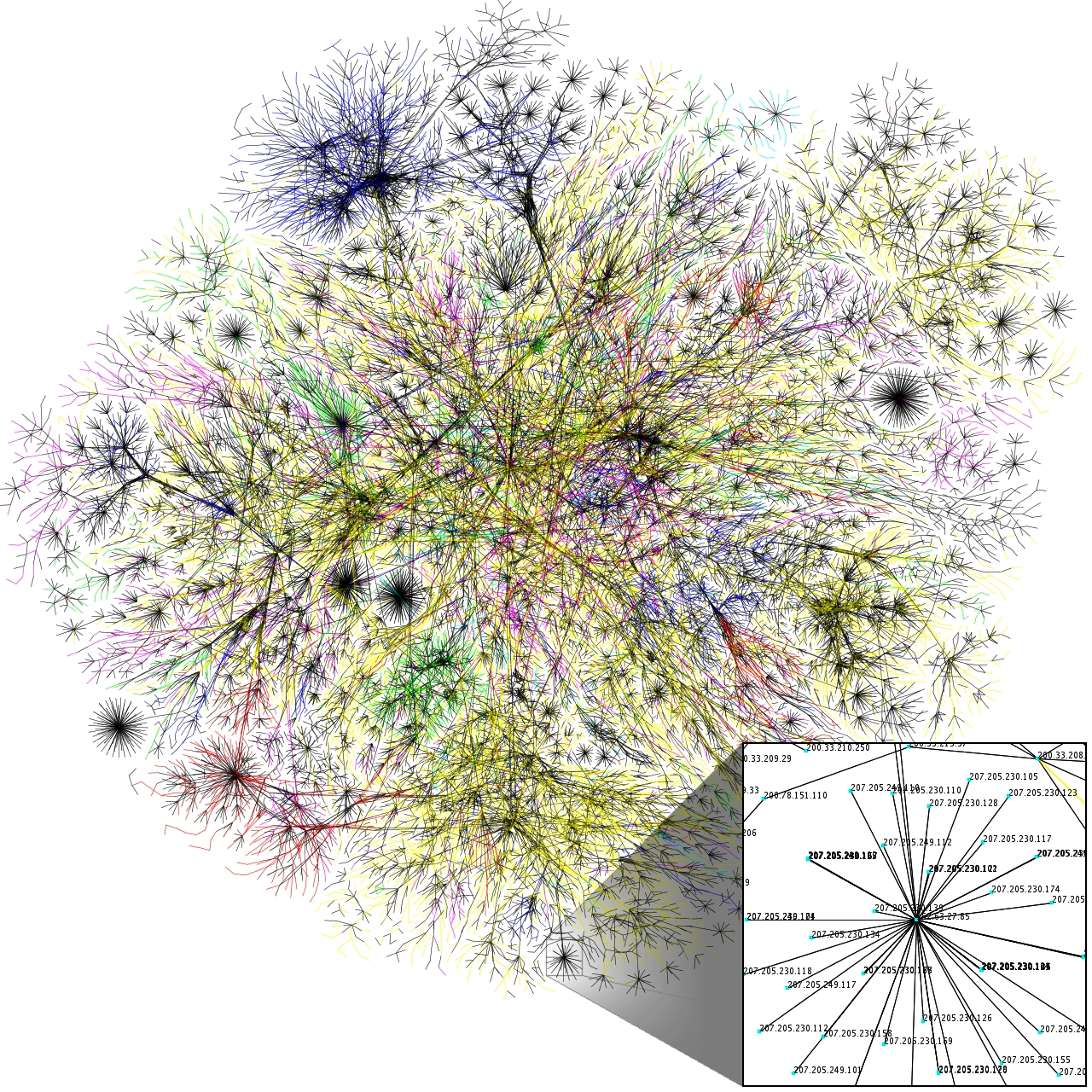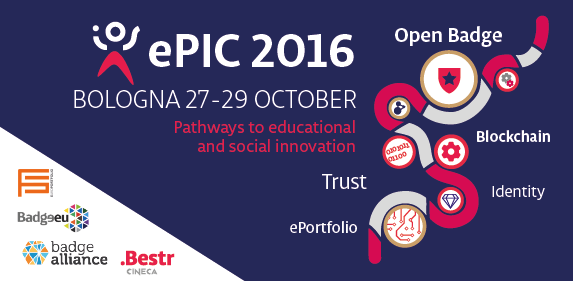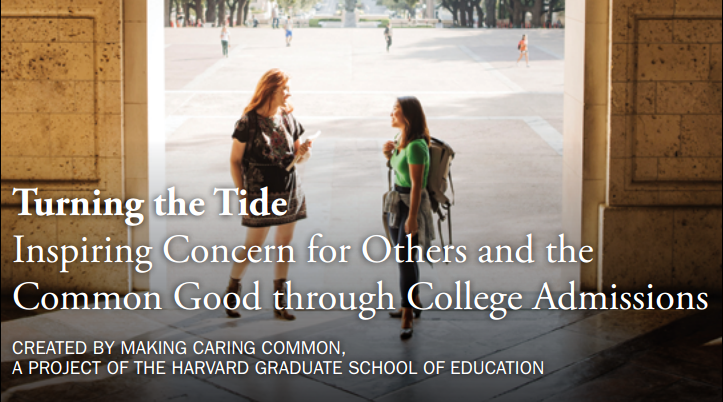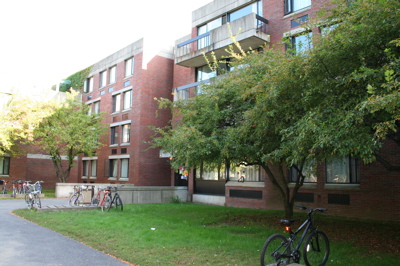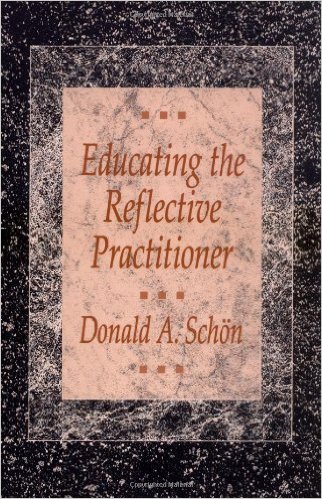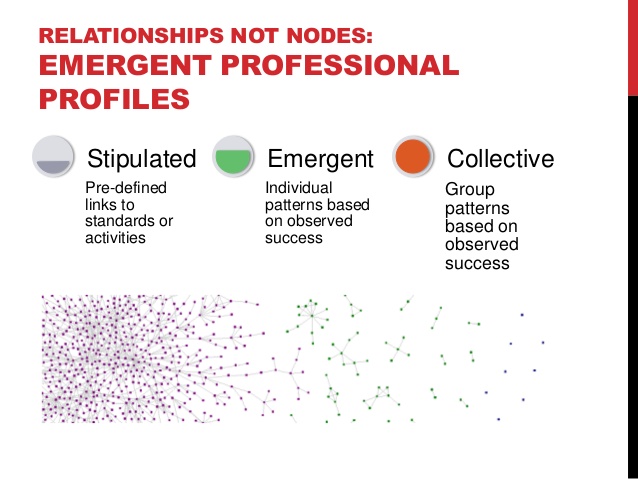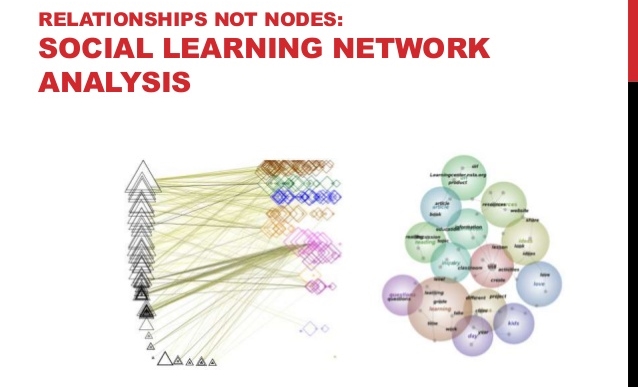I’m looking forward to the September 19 launch of this Toolkit. This personal review is my way of making sense of it… and getting a word in edgewise before the event!
Download the toolkit for free from opentextbc.ca/bcmicrocredential
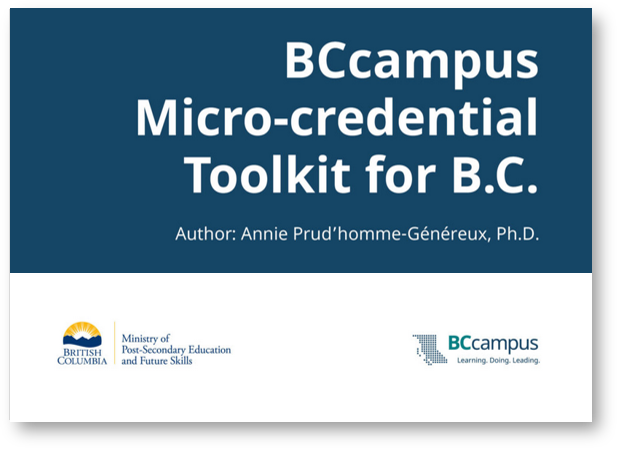
This is a big sprawling review to match a big sprawling document, so a quick summary:
TL;DR
Huge kudos to Annie Prud’homme-Généreux, who poured herself into this cornucopia of a resource that’s a vast improvement on its inspiration, the eCampusOntario Micro-credential Toolkit. More of a maker warehouse than a simple toolbox.
That said, putting on my badge nerd specs, it’s not all perfect from my perspective, which is to be expected from a first edition, especially one whose ambition grew so far beyond its initial scope (400+ pages, more or less, depending on format), delivered by one author who had to deal with so many inputs and competing interests. The focus of her single vision, combined with her deep knowledge of ConEd and her gift for curiosity are some of the reasons why I like this gold mine of specific tools and prompts so much better than the often generic groupthink of the Ontario offering.
My humble summary review: 70% awesome, 20% so-so, 10% questionable or wrong
Caveats and full disclosure
I was a volunteer member of what became known as the Competency Working Group that helped guide this BCcampus-led project, providing advice, feedback and several resources from Canadian and international practice, within and beyond PSE. As part of my contribution, I reviewed a section of the report (although it was only the Introduction; that’s part of why I’m reviewing the whole document here!) I also previously volunteered for the eCampusOntario Micro-credential toolkit.
As a professional in the space of badges and micro-credentials since 2011, I wear three hats:
- Open Recognition advocate, working on multiple fronts to open up the recognition of lifelong and lifewide learning, often, but not necessarily, with Open Badges. See my Open Recognition Ambassador badge. “Them’s me colours”, as Brendan Behan was wont to say.
- Consultant and advisor on digital credentialing systems using Open Badges, in Canada and abroad. Typically on Open Badge Factory or CanCred platforms, but also occasionally on other platforms or just working on frameworks, focusing on recognition concepts rather than specific technology solutions.
- Service provider via the CanCred.ca platform, a specific digital credentialing solution built on Open Badge Factory technology that obviously I think is a pretty good way to share lifewide narratives of emergent identity, learning and achievement.
My remarks in this post are offered wearing the first two hats, using the lens of Open Badges as a way to open up the recognition of lifelong and lifewide learning. And my bias is that I think micro-credentials, at the formal end of the recognition spectrum, often take up too much oxygen in discussions about lifelong learning, performance development and the evolution of effective practices in the world of work and other communities. My brother in open recognition, Serge Ravet, has declared more than once that micro-credentials have colonized Open Badges. I have to say I often see them as the cuckoo in the badge nest, diverting recognition sustenance from other deserving chicks. It doesn’t have to be that way – there’s room for different types of recognition, as I’ve previously mentioned in the past in this blog:
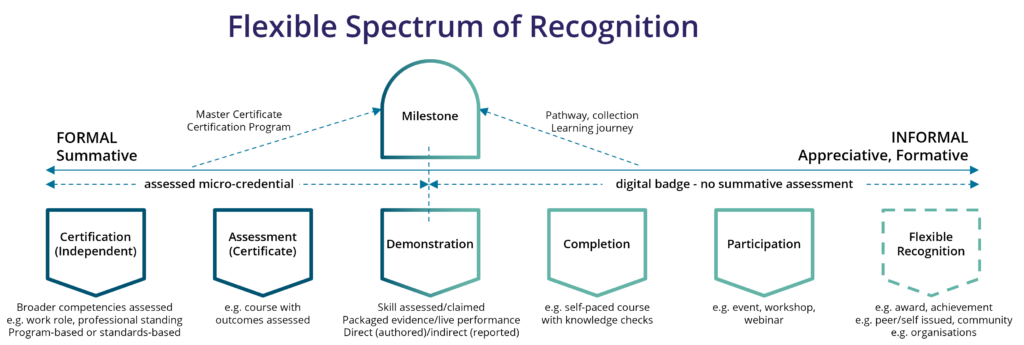
(As a service provider, it’s more often: “Micro-credentials? Sure! You want blockchain with that?”)
A lot of the points I make here about micro-credentials will remind my friends in the international open recognition community of heated discussions about how many angels can fit on the end of a pin. And I wouldn’t blame them, but here I am in Canada, where micro-credentials have taken hold as micro-diplomas, whereas in the US for example, “digital badges” is a more inclusive term and registrars in AACRAO are able to think in terms of “alternative credentials” and can even suggest effective practices for them (the AACRAO document is cited by Annie in this toolbox.)
So why did I bother to volunteer for this initiative? Why so detailed in this review? I like to think it’s a little more than enlightened self-interest, but helping build a Creative Commons resource that I can later harvest and adapt across sectors is pretty appealing. I don’t have to keep things as formal in my adaptations! Annie has delivered a harvestable resource in spades with this Toolkit, and it should only get better over time. Plus, I learned lots lots in the process and am relearning more now, as I review it in detail.
It’s also me trying to live up to this kind acknowledgement:
Don went above and beyond to share his wealth of expertise on micro-credentials. He rapidly responded to requests for information, shared documents and figures, and answered questions. We are particularly grateful to Don for his eagerness to share his extensive micro-credential knowledge.
Acknowledgements: Competency working group
Eagerness is an interesting word (“Does he ever shut up?”) and likely some will welcome my further contributions in this post like those of a skunk at a garden party, but I feel obligated to make them, as I work to “open up” recognition across sectors north of the border, trying to remain true to Mozilla’s original vision in 2011, before the Counter Reformation of micro-credentials in 2014. Open Badges were not invented to become Lego micro-diplomas, but to provide more flexible, inclusive alternatives to formal types of recognition and I can’t stop reminding people of that.
So, for those who are more focused on micro-credentials alone, take all this with a grain of salt. Or just pass on by.
70:20:10 as an organizing principle
[REMOVED: reference to Sturgeon’s Law, following the writer’s adage, “Murder your darlings.”]
I thought it might be useful to organize my remarks in a proportional 70:20:10 pattern, connected in a way to my previously published views on the often misplaced focus of micro-credentials on training courses:
70%: Awesome! Some highlights..
- Sheer scope and detail. I plan on dipping back into this sprawling document on a regular basis, citing specific sections for people that I’m helping.
- Survey of practice, frameworks, toolkits, current status, etc. This is where the Introduction actually starts to get interesting – I learned a lot, and contributed some.
- ADDIE as an organizing principle for the lifecycle section, even though there are other ways to approach the life cycle (e.g. AGILE which Annie does provide..again, such a gift.)
I have point improvement suggestions, such as thinking beyond training courses, and explicitly linking out to other sections for detail (e.g. Critical Information Summary in 9. Recognition of Learning), but overall this is great! - Practitioner War Stories, summarized into Top Tips. Not so much the pontificating “I anticipate that..”, which is a bit like pre-teens speculating about what sex is like, more along the lines of “I thought it was this, but it turned out to be that.” and “Here’s what we learned along the way..” and “these were unexpected benefits of our journey.” By B.C. practitioners – invaluable.
- Marketing and Launch section – just read it.. great prompts, tools, etc.
- Campus Collaborations, especially the parts that go into detail about CE..
- Collaboration with Employers, Indigenous and Community Partners. It’s great that it goes beyond employers to include community partners and including Indigenous partners was an explicit part of the Toolkit’s mandate. I’m hoping this section can grow over time, as it feels a bit brief. I plan to dig further into the Pulling Together Indigenization Guides for an Indigenization track I’m working with Susan Forseille and others to develop for the ePIC 2023 conference in Vienna this December.
[POST SCRIPT: At the Sep 19 launch, it was announced that there would be a new distinct chapter on Indigenous community engagement added to the Toolkit, to be researched by an Indigenous consultant – RFP coming in Q4 2023. Good stuff!]
Starting early is definitely an effective practice, and I thought the discussion of MoUs vs. GSAs was useful, bearing in mind that these agreements can take time to develop, adding friction to Proofs of Concept and Pilots. Why not scope the territory a bit first, and let experience lead policy?
Another caveat probably comes with the fact that this document is intended for a PSE audience: it’s all about PSIs driving the bus and leading the initiatives, there is little or nothing on how to be a non-lead partner, and how to recognize and articulate micro-credentials created outside the sector, perhaps by big private sector providers like IBM, but also by professional and industry associations, for example, or even an “OPX”. Other models are out there, as Brown’s recent improvement on my 2020 table developed for eCampusOntario shows:
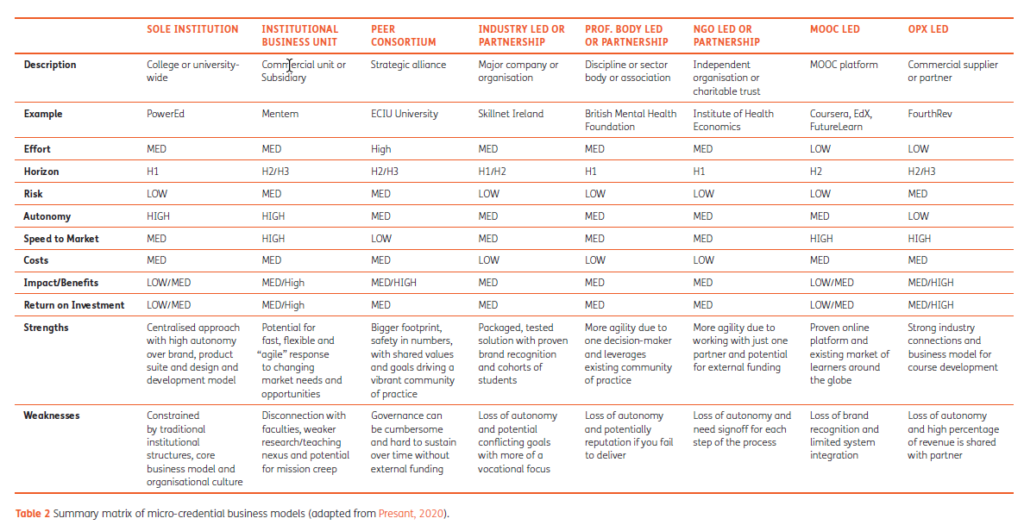
- Financial matters, especially the Market Research part, leveraging Annie’s deep ConEd background. This section should be invaluable for 20-something newbies getting their feet wet, though it needs to be built out a bit more, including what to do when the public funding runs out and in parsing ConEd from Contract Training; see Brown again above (based on Presant, ahem).
It’s good to mention Vicinity Jobs as a Canadian LMI story, though I need to say that EMSI is NOT Lightcast’s database created using Canadian data. Lightcast is the result of a merger of EMSI and Burning Glass, a competitor to Vicinity Jobs in Canada, which does provide data sliced for us (and the UK and other jurisdictions like the UK, as used by Navigatr micro-credentials). One benefit of Vicinity Jobs is that you can drill down via deep links to see terms for Job Requirements used in the context of individual job ads. On the topic of researching occupations, I’ll say that’s one of the knocks against the NOC – roles, not occupations can be a more useful organizing molecule, because roles can can stack into but also span across jobs and occupations and speak directly to the performance (not skills) objectives of employers.
- The Quality Assurance section is also useful, doing a better job than the Ontario’s recent “Ontario Micro-Credential” paper from PEQAB in looking beyond its borders across Canada and the US, for example, though it could it could be better mapped to the notion of the Critical Information Summary, described elsewhere as “micro-credenital manifest”, linked to recent work at TRU.
(Aside: Is no-one else in Ontario planning on commenting on the PEQAB paper besides ContactNorth?)
- The Collaborate with Learners section is also good, though it could use more about autonomous learning and recognition beyond micro-credentials as training courses (a regular part of my “opening up recognition” rant..)
- Design considerations – all good: ADDIE vs SAM, DACUM, ABC. etc. I’ll be back here for more..
> 20: Less awesome
- First part of the Introduction. The opening is pretty boring, especially for a document of this size – I’m not sure why a somebody who’s far enough along the engagement path to consult a toolkit needs to be further convinced. Maybe move some of this stuff to an ammunition section you can use to convince internal or external stakeholders? But then, as I said above, it gets more interesting in the survey of practice, etc.
- Definitions should be built into a full Glossary of terms and concepts, IMO, clearly described for B.C. usage, with citations and variations as needed. Let’s get into the difference between a certificate and a certification, a competency and a level of competence, stacking versus laddering (is it really just stacking for credit?), volume of learning vs scope of competency, and.. digital badge vs. Open Badge vs. micro-credential – Annie does get into the latter, but I think we need something more citeable.
- Institutional governance. I think there needs to be a better discussion of the competing approaches, which play out differently at different PSIs: waterfall, “policy-first” approach first vs. action research, “pilot first”. Some of this is implicit in the war stories, but more could be made of this. I lean to the latter, but there can be reasons for the former, and even a middle ground.
Educational pathways… partly because I remain unconvinced that academic stacking of micro-credentials into macro-credentials like diplomas and degrees is worth the friction and baggage that it generates. One of my blog posts on the topic is linked in the toolkit, but the point is not made that the articulation of micro-credentials into macro-credentials is a far different kettle of fish from the articulation of programs into larger programs and diplomas.
That said, the notion of on-ramps (micro-credentials as “baited credits” for advanced standing, and UFV’s useful modularization of a multimedia certificate into “try one” pieces) seems a promising tack, and the idea of extracting recognition of skills (especially vertical skills) from larger programs is also good, as suggested by Penn State years ago (see below).
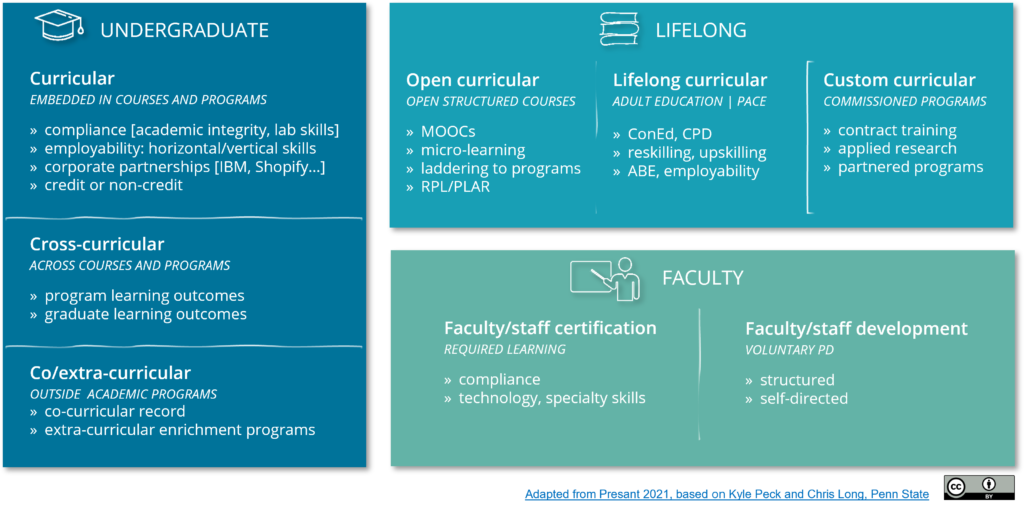
And, by the way, the concept of employer relevant stacking is unaddressed: what if they don’t care about your stacks? What would make stacks valuable for them? Not academic credit, based on research we conducted in B.C. last year… probably something more to do with workplace roles. See the diagram below from my post Stacking micro-credentials: the joy, the horror, which includes my addition of “Industry recognition clusters”:
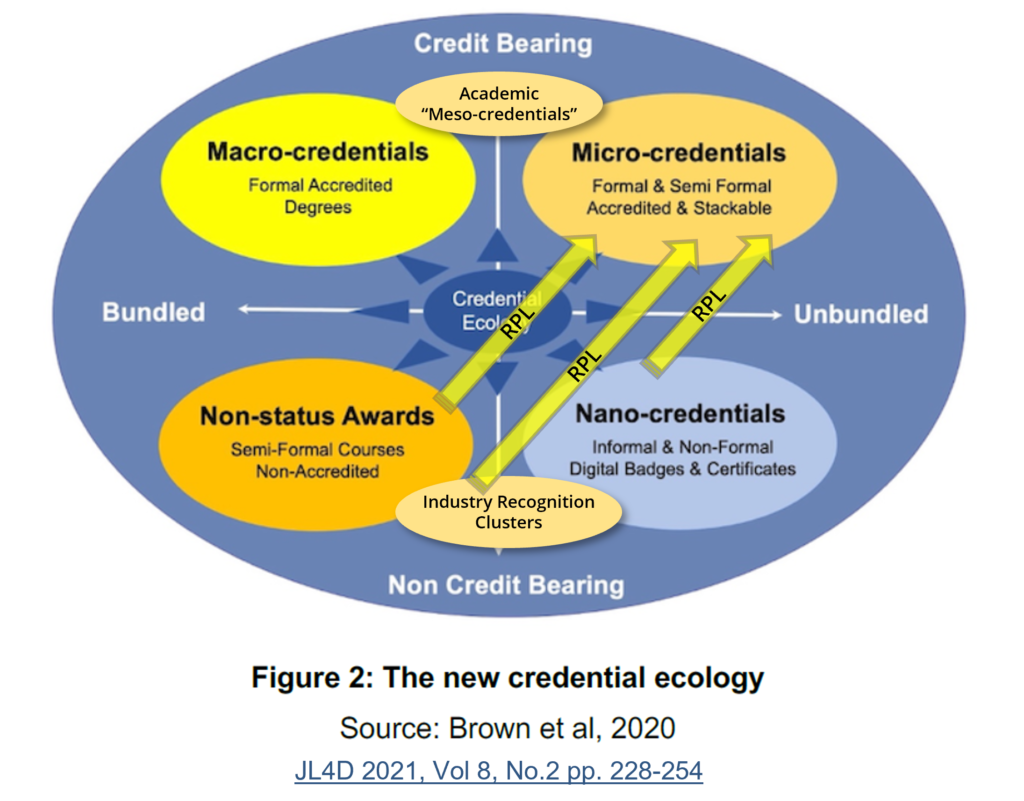
- Recognition of Learning. The PLAR section is great – I particularly like the NAIT model, but I think the more comprehensive concept of Recognition of Prior Learning (RPL) needs to be applied as an organizing principle in this section – Susan Forseille (or someone else at BCPLAN) could do this in their sleep: PLAR, credit transfer, Credit Bank, etc.
It would be worth adding more here about Deakin and other Australian institutions (and RTOs), particularly Deakin’s “Recognition of Professional Practices” which are lean, authentic evidence-based ways to recognize transferable practice at different levels (mapped to the AQF), coupled with a top-ups of domain-specific knowledge.
There should also be more about what what the Credential as You Go (CAYG) multi-state initiative in the US calls “external learning“, uncoupled from academic programs: not just prior, but current and future: WIL, autonomous learning journeys, etc.
In this document “Recognition” seems to be about the digital credential or Credit Articulation and Transfer (CAT) or even Micro-credential Recognition, Articulation and Transfer (McRAT – my coinage, not sure it will stick…)
Open Badges. It’s great that this dominant credentialing technology standard features explicitly, unlike in other Canadian documents, but in my view this should have been done much earlier in the document, as was the case in the AACRAO paper, which is riddled with references to Open Badges. If the term can be used openly by US registrars, maybe we should be more open about its use up here.
In addition, there are several questionable statements made about Open Badges and no discussion of how the standard is evolving (Open Badges v3.0). I suggest someone with a strong technical background vet this section in the context of the published versions of the standard.
Critical Information Summary. It’s good to see this, but I think it needs to be introduced earlier, maybe in the Quality Assurance section.
Micro-credential Typology. This section feels short and a bit vague about different kinds and sizes of micro-credentials that might be certificates or certifications, and can be delivered and assessed in different ways.
Wearing my ” opening up recognition” hat, I might point people to the IDB Taxonomy slide and Learning Agents’ Meta Framework slide from my CAUCE 2023 presentation in May for examples of typologies.
Links provided throughout the document are great, awesome in fact, but they are scattered all over the place – the document could use a curated summary References section, or even a database, similar to DCU’s Micro-credential Observatory (perhaps a BC/CA annex to that Observatory? I understand they’re looking for ways to make that effort more sustainable..) Link rot will be an issue..
External learning: beyond training courses. There should be more about Work Integrated Learning and Learning Integrated Work, as envisioned by Beverley Oliver :
I would like to see learning integrated work, industry coming up with its own micro-credentials, where education provides advice and expertise so that actually industry is educating its own – that’s one of the really exciting possibilities.
from a video Interview pre-recorded by learning Agents for a regional micro-credential event in Hamilton, Ontario in 2021
Not to mention Communities of Practice and Self-Directed Learning: not self-paced, automated Rise courses, but truly autonomous self-navigated learning journeys relevant to learners and employers alike, that can be authentically recognized.
And while we’re at it, why not join Inter-American Development Bank and others in leveraging badges for learning organizations?
> 10: Not awesome
Micro-credentials as a monoculture. There are other types of digital badges besides micro-credentials, non-formal and informal – many of them can be quite useful and even more authentic than their more “rigorous” counterparts. I’m not sure how Annie feels about this topic, but I doubt she had much choice in the matter – micro-credentials was her remit.
To quote myself from an earlier post:
What about less formal types of recognition, that might be just as useful and valuable, if not more so than an assessed course credential? The various webinars and MOOCs that didn’t require a summative assessment – useless? Not really. Even better, that employer testimonial, or that evidence package you assembled to support your self-claimed badge, or those endorsements you got from your co-workers? Or the Guru badge you were crowned with in your community of practice? Maybe that award you won in the hackfest at the makerspace? Or the heartfelt “Thank you” badge from the community association that actually tells the story of how you made a difference last summer? These are all different types of recognition, calling for different types of badges with different requirements to make them fit for their respective purposes. The authentic power of badged recognition often comes out of the specific context: the story that the badge can tell about you as an individual that other people might want to know and work with.
- Micro-credentials as training certificates. As mentioned above many times, there’s way too much about micro-credentials and training courses, even a conflation of course and credential. As Tony Bates said, if that’s all they are, why all the fuss? Again, it’s the current zeitgeist in Canada.
- Micro-credentials as Lego for macro-diplomas. See my remarks above.
- Misquotations and missing citations – UPDATED
I’m very pleased to say that the concerns I outlined in this section were fully addressed by a very responsive BCcampus within 24 hours of publishing this post.
In conclusion…
Niggling issues aside and despite my never-ending rants about opening up recognition, this is a big beautiful sprawl of a resource, with a broad integrated vision, great sources, usefully encapsulated captures of practice, recipes, tools, etc., etc. A “broth of a book”, as the Irish might say. It’s a first edition, needs a second one soon and there will be an ongoing need for care and feeding, but oh, so well worth it.. assuming that micro-credentials are your thing… 8->
As a final note, it would be great if it were easier to flag typos, inaccuracies and new suggestions in the context of the document. I find the current system for input not very usable.. it would be great to do something with Hypothes.is or similar.

